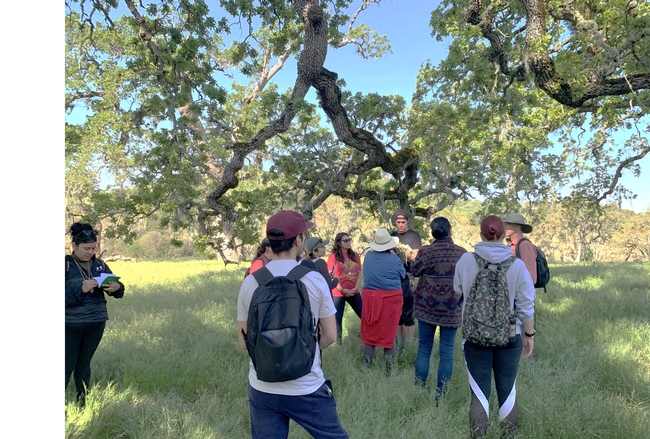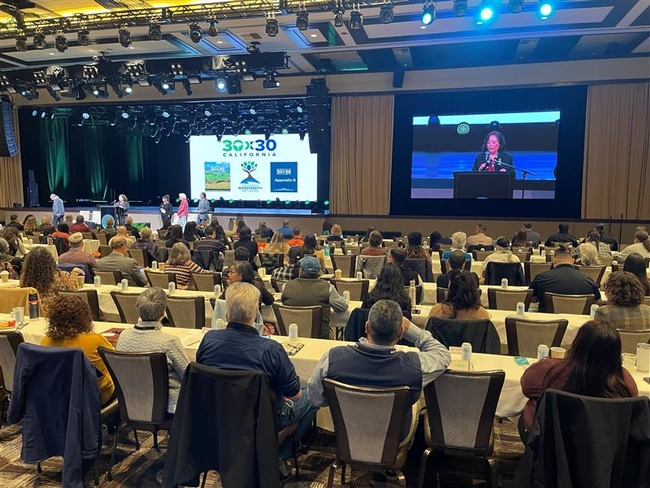The Berkeley City Council recently agreed to purchase a two-acre site (currently used for parking) known as the shellmound and a place of sacred ceremonies and turn over it over to the Sogorea Te' Land Trust, which is planning to restore the site to a place of gathering and ceremonies. This is an example of LandBack.
LandBack is a growing movement focused on returning land to Indigenous people, encompassing various actions to enhance their access to and stewardship of ancestral homelands. To fully grasp the movement's importance, one must understand the history of U.S. law, as rooted in the colonial Doctrine of Discovery, dating back to the late 15th century. This legal and theological concept was rooted in the idea that Christian European nations had the right to claim and control lands that were inhabited by non-Christians to justify European exploration, colonization and the dispossession of Indigenous peoples who were relegated to a non-human status. This worldview facilitated the colonization of new lands and the enslavement of Native people for extracting resources like minerals, animal pelts, forests, range and agricultural production.
The U.S. courts persist in upholding the belief that the U.S. government holds the ultimate right to own and control the land, regardless of the presence and claims of Indigenous peoples. This perpetuation leads to ongoing land dispossession and creates enduring barriers to land access, impeding Indigenous stewardship. Consequently, Native communities experience adverse effects on their well-being, cultural vitality and intergenerational knowledge transfer. LandBack is crucial for Indigenous people to steward the land in a manner that restores their reciprocal relationships dating back to time immemorial.
Some recent policies help enable the principles of LandBack. For example, California law (SB-18, 2004) recognizes tribes' ability to hold conservation easements on land in order to protect cultural resources, enable access and engage in stewardship; and requires state agencies to have tribal consultation policies. The Native American Ancestral Lands Policy (2020) facilitates tribal access, use and co-management of state-owned or controlled natural lands. Goals include prioritizing tribal purchase or transfer of excess land, establishing co-management agreements and providing grants for land procurement and conservation.
The LandBack movement is gaining momentum to address justice, promote Indigenous stewardship, protect the community of life and advance climate resilience thanks to tribal leadership and collaborations with a variety of entities, including individuals, religious institutions, land trusts, and local, state and national governments. Actions range from the full return of land without restriction to more limited agreements including enabling co-stewardship of land, especially on public lands such as federal or state parks, forests, and wildlife refuges.
UC's Tribal Lands Workgroup
Through leadership from the UC Office of President, a systemwide Tribal Lands Workgroup is focusing on the following topics. Members of the workgroup, with assistance from UCANR's Informatics and Geographic Information System, assembled a mapped inventory of UC lands as well as tribal territory and other land cover information. The workgroup has also researched existing systemwide memoranda of understanding or other agreements with tribes related to the use of UC land.
A good example is the memorandum of understanding developed between the UC Hopland Research and Extension Center, which is part of UCANR, and Hopland Band of Pomo Indians (HBPI) who manage neighboring lands. This agreement is designed to increase the educational, research, land stewardship and cultural exchange opportunities between HBPI and UCANR, and delineate areas where we can work together on specific projects. Given the interest in creating these types of collaborative opportunities, this agreement is likely just the first of more to come. This UC workgroup is also exploring the best way to develop and share guidelines for engaging with tribes about use of UC land consistent with tribal consultation processes and existing rules and regulations.
Co-stewardship Workshop
To learn from existing co-stewardship models, several UC scientists including myself, Steve Monfort, director of UC Natural Reserves; and Patrick Gonzalez, executive director of UC Berkeley Institute for Parks, People and Biodiversity; worked with other California Biodiversity Council steering committee members and in partnership with the Federated Indians of Graton Rancheria and with consultation from the Native American Research Institute to organize a workshop titled “Indigenous Co-stewardship of Public Lands: Lessons for the Future.” Funding was provided by the Gordon & Betty Moore Foundation, Resources Legacy Fund and Federated Indians of Graton Rancheria.
This workshop held in February 2024 was well-attended by tribal leaders, Indigenous culture bearers and staff from public land-management agencies, with a total of 536 registered for the livestream and approximately 300 in person.
Chairman Greg Sarris of Federated Indians of Graton Rancheria provided important context, examples of co-stewardship in action from Sonoma County and inspiration to do more. Samuel Kohn, senior counselor to Office of the Assistant Secretary of Indian Affairs, explained the various federal policies and guidelines that relate to co-management with tribes. The heart of the workshop was a series of co-stewardship case studies from California, other states and Canada. These were followed by examples of Indigenous people in Mexico engaging in stewardship and sustaining their livelihoods. A real snapshot of the topic across North America!
We spent the second day together visiting places now known as Point Reyes National Seashore and Tolay Lake Regional Park that have long-term co-management agreements initiated by Federated Indians of Graton Rancheria. A more thorough summary of the workshop can be found at News from Native California by Tavi Lorelle Carpenter.
If you are interested in working with tribes and tribal communities, please join the UC ANR Native American Community Partnerships Workgroup. Contact co-chairs Jennifer Sowerwine at jsowerwi@berkeley.edu and Christopher J. McDonald at cjmcdonald@ucanr.edu.

